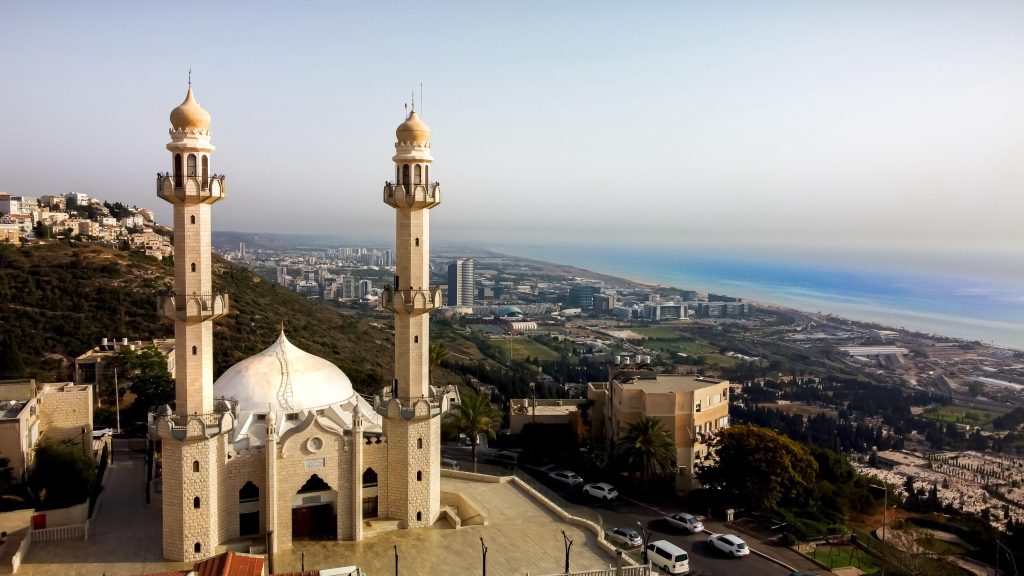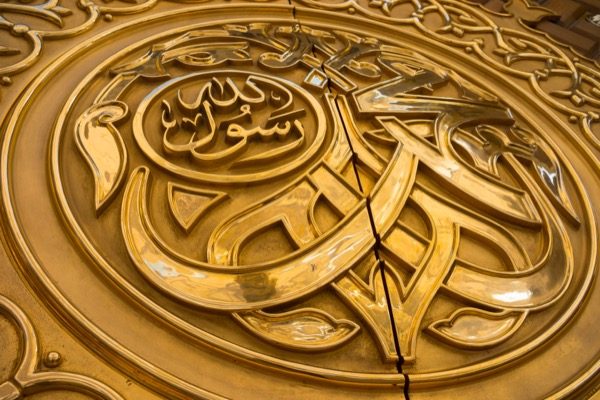
© Shutterstock
Fazal Ahmad – UK
Context
The ongoing conflict in Palestine has led to a misconception that Jews and Muslims cannot tolerate each other, or that the religions encourage their worshippers to fear and oppress each other.
This article explores the differences between the faiths and the history of interactions between Jews and Muslims in different parts of the world.
Common Heritage
Both Muslims and Jews are monotheists. Jews come from the line of Abraham (as) and after prophet Moses (as) brought the Torah, they had a succession of Prophets and Kings. As the Qur’an was revealed to Prophet Muhammad (sa), those same Jewish Prophets and Kings were mentioned with respect in the Qur’an, indeed Muslims are obliged to believe in and respect all of the previous Prophets. Jews and Muslims have many common religious practices e.g. both practise male circumcision and have similar dietary restrictions such as not eating Pork. Both groups see Jerusalem as a key spiritual city.
Arabia
In the time of the Holy Prophet (sa), there were numerous examples where he encouraged his followers to treat Jews with respect and dignity, even if they were being goaded or insulted by them. The Prophet (sa) had to migrate to Madinah (at that time known as Yathrib) to flee persecution in Makkah. Yathrib at the time had a large Jewish population, including the tribes of Banu Nadir, Banu Qaynuqa and Banu Qurayzah. It was the Holy Prophet (sa) who brought them together in peace through a pact between the various Arab and Jewish tribes in the spirit of unity and equality. (Ahmad, 2012, p.80)
Palestine
After the death of the Prophet (sa), as Islam began to grow in influence, the Caliph Umar (ra) came to Jerusalem in simple clothes in 638 CE. Many saw him as a liberator from Roman rule, and the various Christian denominations and the Jews were given freedom to worship. Jerusalem held a special place in the hearts of the Muslims as originally, they prayed in the direction of the city. Umar (ra) signed a peace treaty enabling Jews and Christians to live in peace. (Aziz, 2012, p.86) This pact would act as a template for future coexistence of different faiths if practised in the spirit of the original pact enacted by the Holy Prophet (sa).
After the Second World War and the atrocities of the Holocaust faced by the Jewish community across much of Europe, Muslims of Palestine welcomed Jewish refugees, and many housed them in their own farms. They were seen as fellow monotheists, and there was initially no issue between them. The conflicts soon started but as a result of the political aspirations of the Zionist movement rather than any religious issues between the two communities.
Spain
For many centuries, from 711 CE until 1492 CE, Spain was Muslim Al-Andalus. It became a beacon for development in Europe and a hub for commerce, theology and culture. The environment led to creative marvels such as the Alhambra palace in Granada. Under the yolk of Muslim leadership, many Jewish communities thrived. Moses ben Maimon (Maimonides) was born in Cordoba in 1135 CE and would become one of the greatest Torah scholars and eventually the head of the Jewish community in Egypt.
Many Jews attained high office due to their skills in trade, poetry and medicine. Ibn Shaprut became the trusted advisor and doctor to the Caliph as well as his duties in the Jewish community (Fletcher, 1994, p.70). There were many other examples such as Samuel ibn Naghrila, who from 1038 – 1056 CE, served as the first minister of Granada. He was known for his wisdom, dignity, poetry and was also a serving Rabbi (Fletcher, 1994, p. 96). One of the greatest scholars on Islamic Spain, Stanley Lane-Poole writes:
“Jew and Moor and Persian joined in that cultivation of learning and philosophy, arts and sciences, which pre-eminently distinguished the rule of the Saracens in the Middle Ages.” (Lane-Poole, 1984, p.24)
The great Mezquita of Cordoba was the most significant mosque in all of Al Andalus. The Muslims created initially shared the place of worship with Jews until the Synagogue of Cordoba was built, and even today, some Jewish motifs can be seen in the architecture of the mosque.
Egypt
Obviously, the Jewish community had a long history in Egypt, but in the Muslim era, many attained high office such as Dunash ibn Tamim, the doctor of the Fatimid ruler of the time. Islam took a foothold very early, and by 641 CE, the Treaty of Alexandria afforded the Jews peace and the right to remain in the country unmolested, after centuries of mistreatment at the hands of the Byzantine Christian rulers.
Türkiye
Jewish communities had existed in old settlements in Türkiye for many centuries, but the largest influx was after 1492 CE after Jews and Muslims were being expelled from Al Andalus in Spain after the Christian reconquest. Sultan Beyazit II welcomed 150,000 Sephardic Jewish refugees to Türkiye. They brought with them the culture, innovation and knowledge from Islamic Spain and with the encouragement of land and tax exemptions, soon settled and thrived. Many would go on to take senior roles in the Ottoman Empire including as doctors, administrators and diplomats. Another wave of Jewish emigrants were welcomed from Europe after the Second World War. Modern Istanbul still has Jewish heritage in the area around the Galata Tower.
North Africa
For centuries, Jewish communities flourished in much of North Africa in Morocco, Algeria, Libya and Egypt. Many had fled to North Africa in antiquity after the Roman occupation of the Middle East. In Morocco, after the establishment of the city of Fez in 789 CE, many Jews settled to benefit from growing trade across the world as Muslim communities were established across Africa, the Middle East and Asia. The Jewish community established their own theological schools (yeshivot) and attracted scholars and poets from many countries.
Some of the Viziers in the centuries that followed were Jewish such as Abu Ayyub Solomon, Abraham ibn Meir and Solomon ibn Farusal. However, the fortunes of the Jewish community fluctuated as different factions such as the Almoravids and Almohads took control in North Africa.
Conclusion
So, as we have seen, for over 1,400 years, Muslims and Jews have recognised that they have much more in common with each other than they have differences, and have been able to coexist and thrive. Both share a common heritage and history and similar religious practices.
This does not mean that relations have always been perfect. There are many instances where there were disagreements and even atrocities between the two communities, but these were inspired by politics rather than religion just as the current ongoing struggles between Palestine and Israel are. Perversely whilst the conflict rages, it has united Jews and Muslims through common voices for peace.
As we have shown in the article, there are so many instances where Jewish people facing persecution in Christian countries fled to Muslim territories for sanctuary and were able to thrive, or where Jewish and Christian communities were able to prosper in Muslim territories.
About the Author: Fazal Ahmad is the Editor for the World Religions section of The Review of Religions. He also serves as the Global Operations Director with Humanity First, and is responsible for poverty alleviation projects in 54 countries, mainly in Africa, South Asia and Central America.
References
- Ahmad, M. B. M, (2012), Life of Muhammad(saw), Islam International Publications Ltd, Tilford, UK
- Aziz, A., (2012), The Age of the Rightly Guided Caliphs: Umar Ibn al-Khattab, Darussalam, Riyadh, Saudi Arabia
- Fletcher, R., (1994), Moorish Spain, Phoenix (Orion Books Ltd), London, UK
- Johns, C., (2010), Special Issue: The Holy Land, National Geographic, 26 January 2010, USA.
- Knobloch, E., (2001), Monuments of Central Asia, I. B. Taurus, New York, USA
- Lane-Poole, S., (1984), The Moors in Spain, Darf Publishers Ltd (first published 1887), London, UK
- Rahman, H., U., (1999), A Chronology of Islamic History 570 – 1000 CE, Third Edition, Ta-Ha Publishers Ltd, London, UK




Add Comment